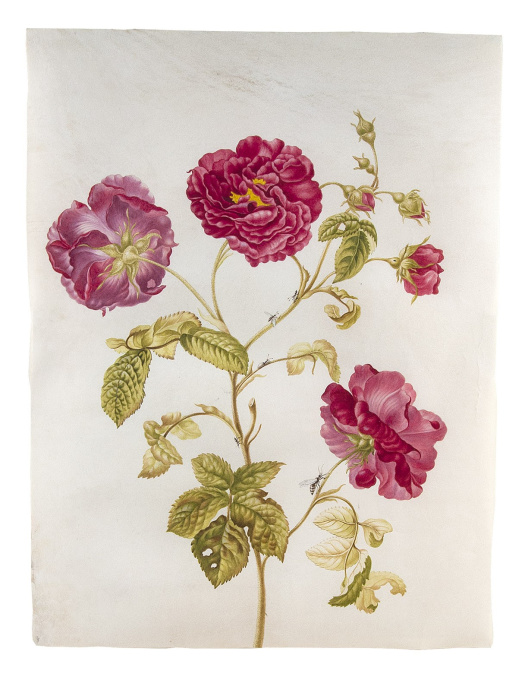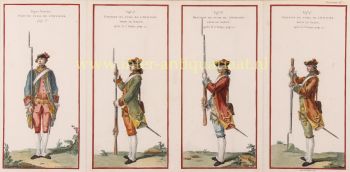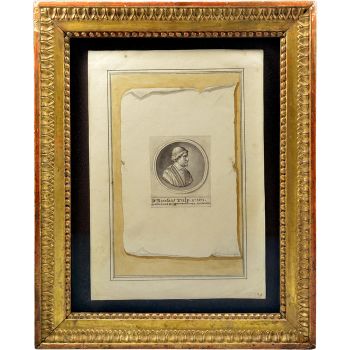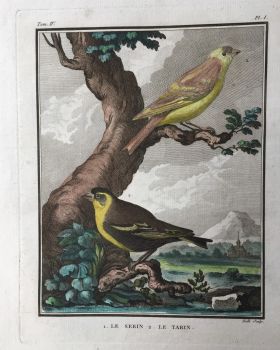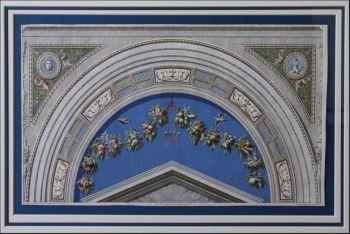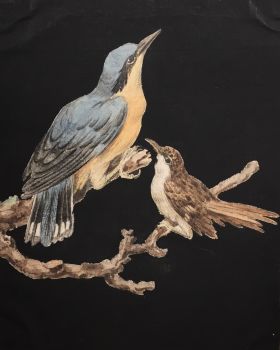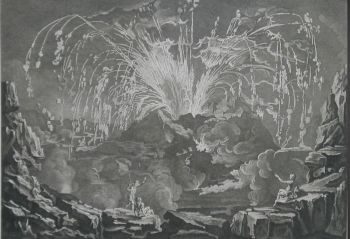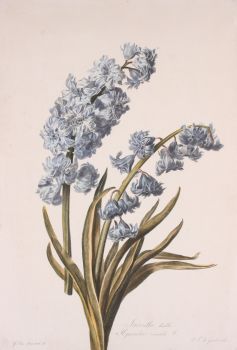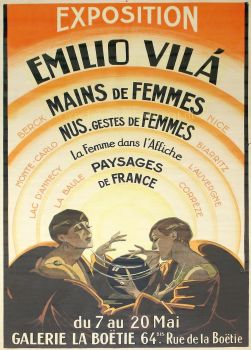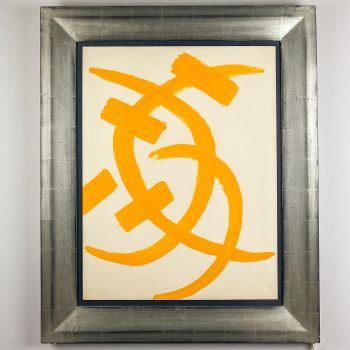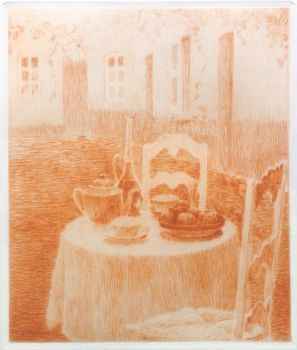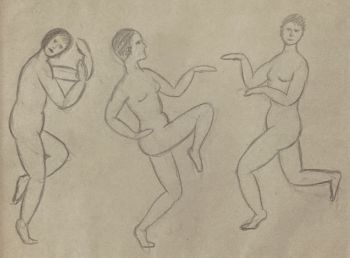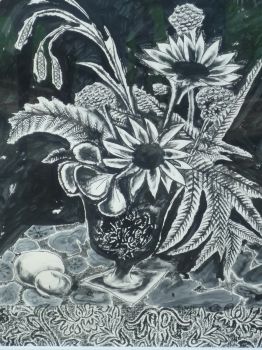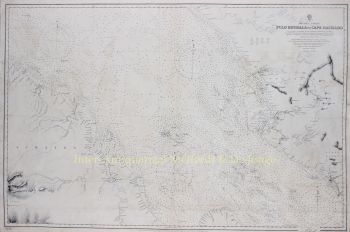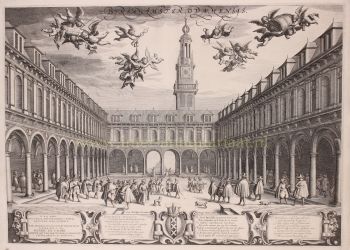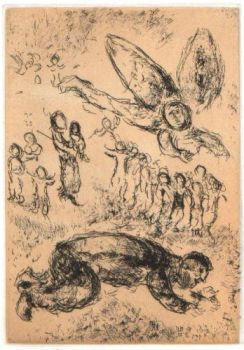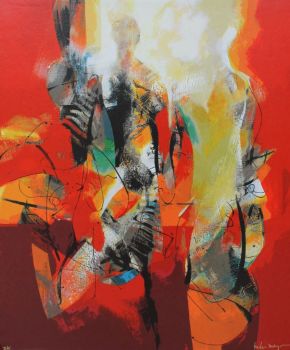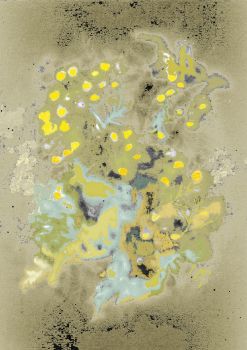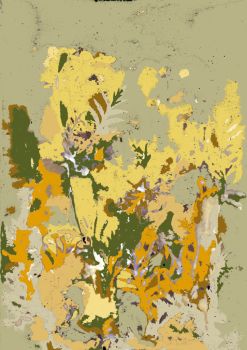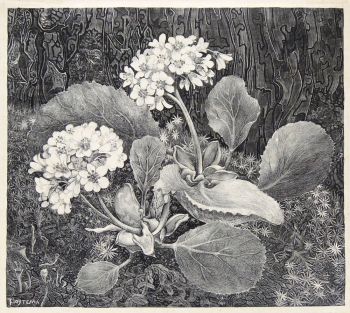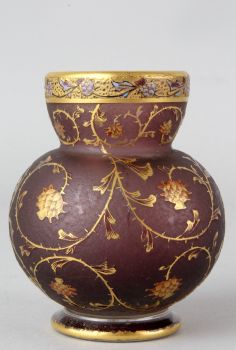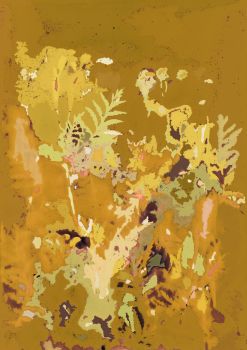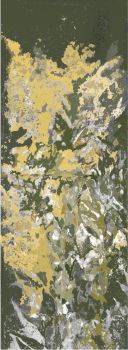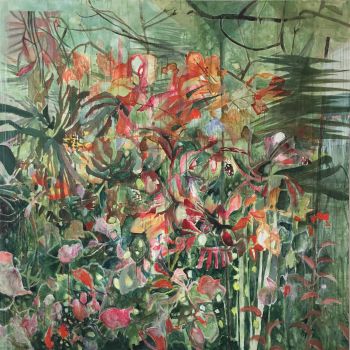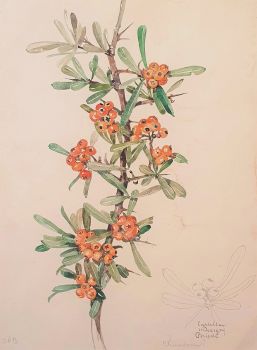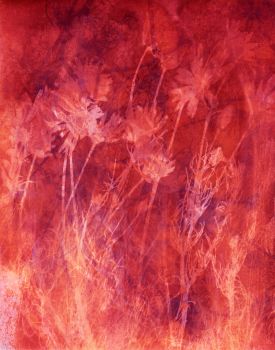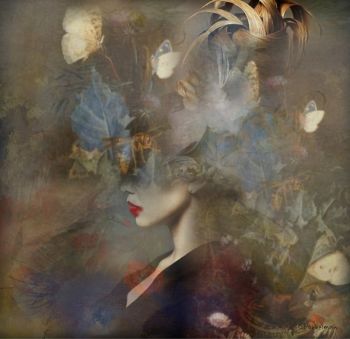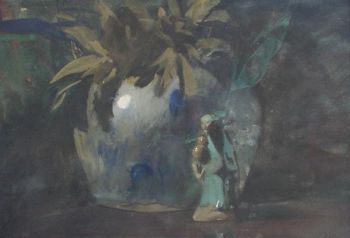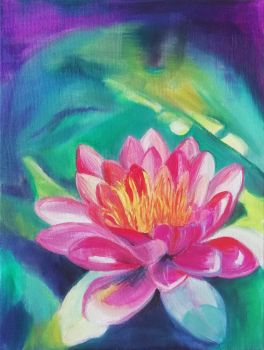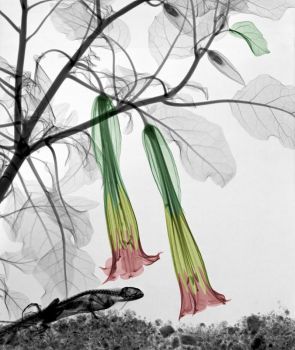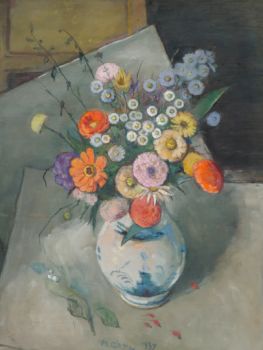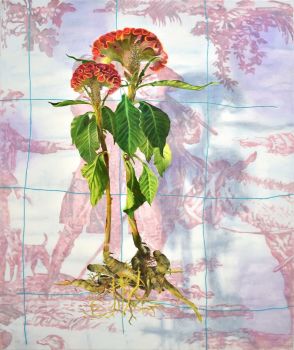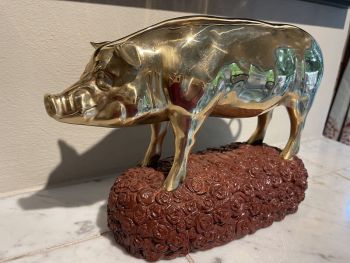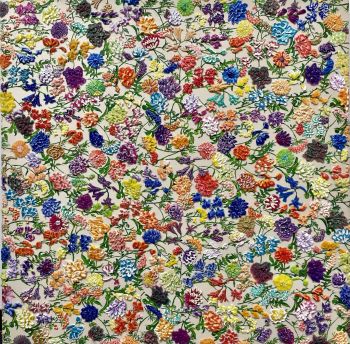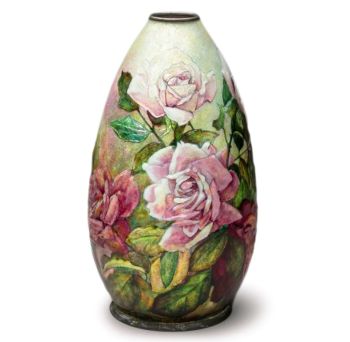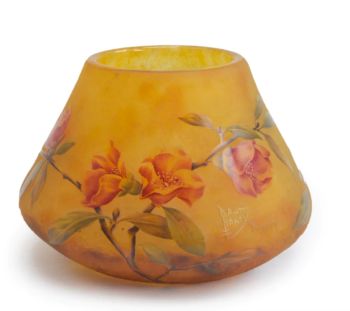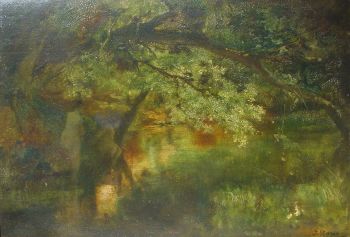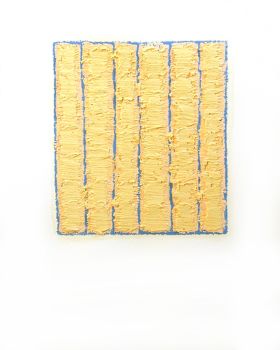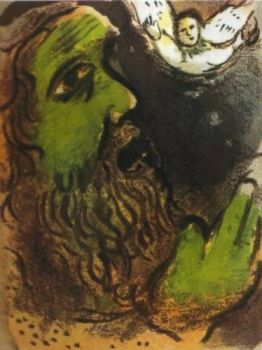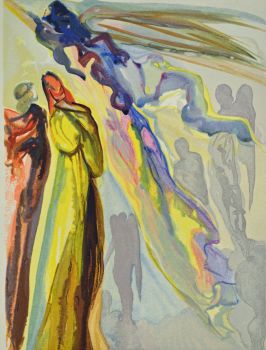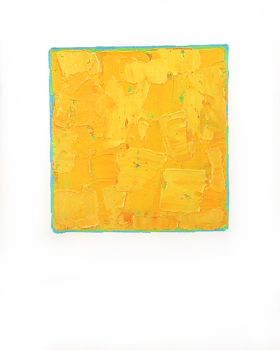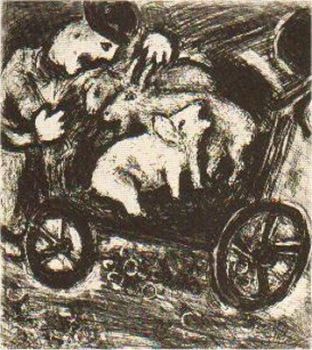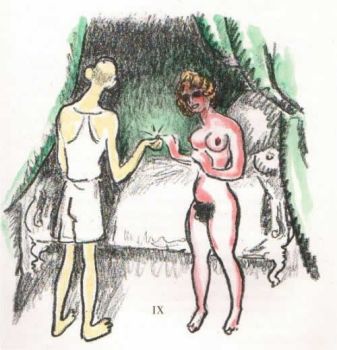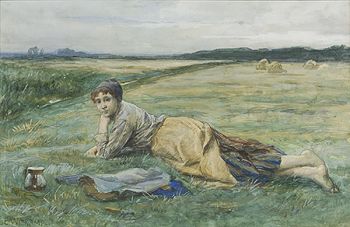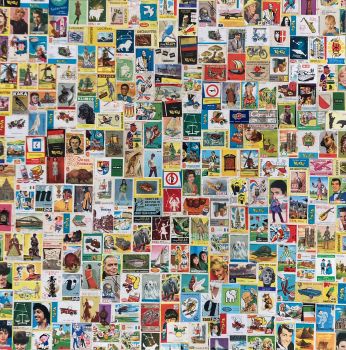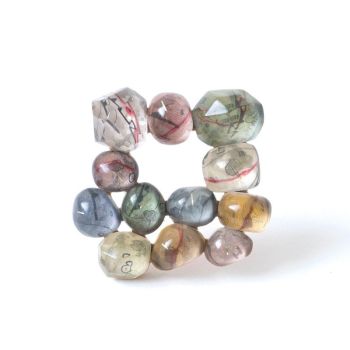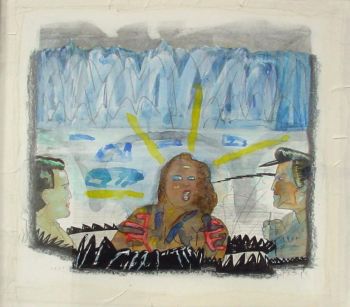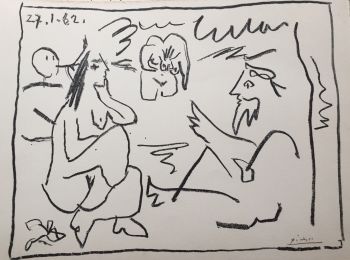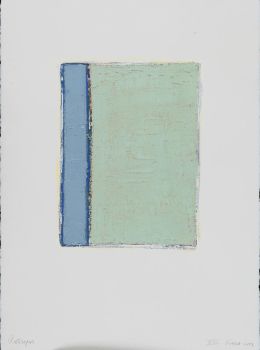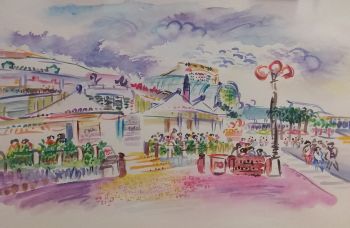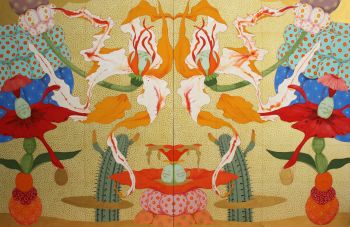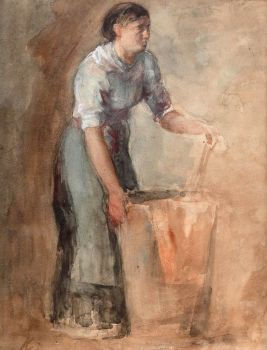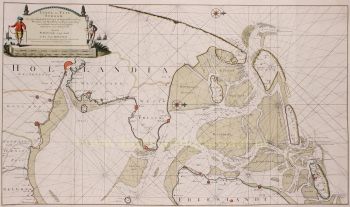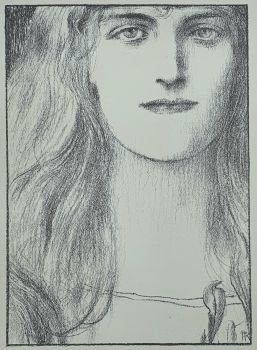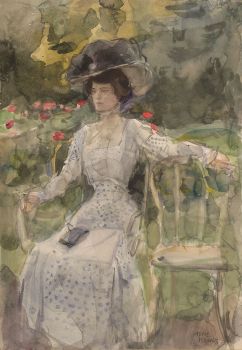Flower watercolour with insects, by the daughter of Maria Sibylla Merian 1700
Johanna Helena Herolt
PapierAquarelle
29 ⨯ 38 cm
Actuellement indisponible via Gallerease
- Sur l'oeuvre d'art[Watercolour of a branch of a French roses, with several flowers and insects].
[Amsterdam, ca. 1700]. Watercolour drawing (38.5 x 29 cm) on extremely fine white parchment, said to be uterine lamb, showing a branch of French roses with three fully opened flowers, five buds or partly opened flowers, four ants (with and without wings) and probably a hover fly. Framed.
Characteristic original watercolour botanical drawing by Johanna Helena Herolt (1668-post 1721), the eldest daughter of Maria Sibylla Merian and Johann Andreas Graff. It shows a branch of French roses (Rosa gallica) with three large, fully-opened flowers and five buds or partly opened flowers, four ants (one winged) and probably a hoverfly (Syrphidae). She probably drew it in Amsterdam around 1700. Though she still remains in the shadow of her mother, she was a fine flower and insect artist in her own right and there is growing appreciation of her work. Her watercolours, more baroque than her mother's and often with brighter colours, radiate vigour and vivacity: the flowers, painted with intensity in every detail, really come to life.
A series of Herolt's works from 1698 in the Herzog Anton Ulrich Museum in Braunschweig includes similar sheets of roses (nos. 10, 26, 28, etc.). Reitsma, p. 135, notes that the prices for the flower watercolours increased with the number of insects. Most of Herolt's work is numbered and we understand the highest number known is 164. No number is visible in the present watercolour.
In the finest state of preservation, with certificate of authenticity from Dr. S. Segal, Amsterdam.
Cf. Reitsma, Maria Sibylla Merian & dochters (2008), ills. 103 & 110 (pp. 139 & 147); Wettengl, ed., Maria Sibylla Merian 1647-1717, kunstenares en natuuronderzoekster (1998), p. 85 (both showing Herolt watercolours of other flowers in a similar style). - Sur l'artisteSelon le RKD, elle était la fille aînée des peintres Maria Sibylla Merian et Johann Andreas Graff, et a appris à peindre avec sa sœur Dorothea Maria Graff.Bien qu'elle soit née à Francfort, en 1670, la famille a déménagé à Nuremberg, où elle a été élevée. En 1681, sa mère retourna à Francfort sans son père, afin de vivre avec sa mère après la mort de son beau-père Jacob Marrel. Bien que Johann Graff ait rejoint sa famille plus tard, en 1686, Merian a quitté son mari et a déménagé avec ses deux filles et sa mère dans une communauté religieuse de labadistes à Wieuwerd, en Frise. Johann Graff a fait diverses tentatives de réconciliation mais est finalement retourné en Allemagne. En 1691, les quatre femmes déménagent à Amsterdam, où elles installent un studio de peinture de fleurs et de sujets botaniques, poursuivant le travail de Merian sur "The Caterpillar Book". Johanna épousa le 28 juin 1692 le marchand Jacob Hendrik Herolt, également ex-labadiste. Ils eurent deux enfants et Johanna commença à assumer ses propres commandes, travaillant pour Agnes Block et l'Amsterdam Hortus comme sa mère. Johanna a déménagé avec son mari au Surinam en 1711 où elle est probablement décédée, quelque temps après 1723. Travaux [modifier] Une série numérotée de 49 dessins signés par Herolt sur vélin sont dans la collection du musée Herzog Anton Ulrich, à Brunswick. [2] Cette série a peut-être été commandée par la botaniste et collectionneuse mennonite Agnes Block. D'autres dessins d'Herolt se trouvent au British Museum. [2]
Artwork details
Catégorie
Sujet
Matériel & technique
Couleur
Related artworks
- 1 - 4 / 24
Jan Voerman sr
Still Life with flowers in a Chinese figurine1850 - 1900
Prix sur demandeKunsthandel Pygmalion
1 - 4 / 24- 1 - 4 / 24

